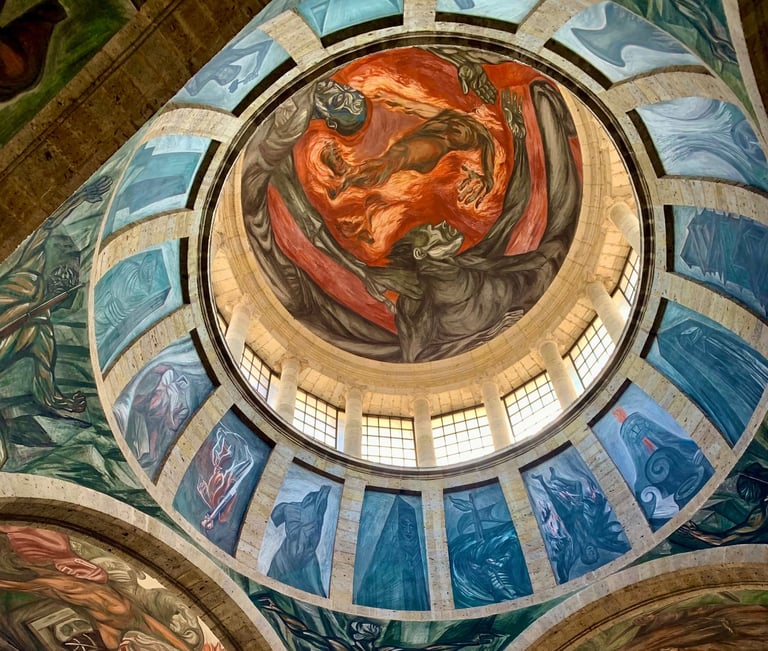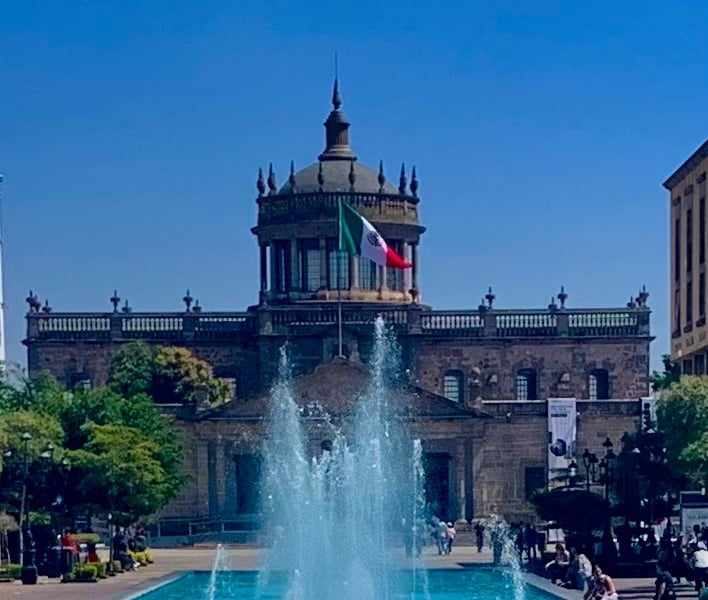The Sistine Chapel of the Americas - Hospicio Cabañas
GUADALAJARA, MEXICO


The Hospicio Cabañas was built at the beginning of the 19th century to provide care for orphans and the disadvantaged. It was one of the oldest and largest orphanages in the Americas, serving as home to thousands of orphans and the disadvantaged in Guadalajara between 1810 and 1980.
This beautifully designed and highly symmetrical building has 23 patios, 106 rooms, 72 hallways, and two chapels. Considered to be one of the best examples of neoclassical architecture in Mexico, it officially opened its doors as a museum in 1983, featuring national and international exhibitions over the past several decades.
Most impressively, it permanently hosts 57 murals by famous mexican artist Jose Clemente Orozco - one of Los tres grandes (The Three Greats) in Mexico, along with Diego Rivera and David Alfaro Siqueiros, who created powerful murals that helped to educate a mostly illiterate population and shape Mexico’s national identity through a movement known as Mexican Muralism. Following the Mexican Revolution (1910-1920), the government funded murals to shape the nation’s understanding of history through social and political images created by commissioned artists in many public settings such as chapels, schools and government buildings.
Orozco's first big commission was in 1934 to paint Father Hidalgo on the ceiling above the main staircase of the Palacio de Gobierno (Government Palace). Later, between 1937 and 1939, Orozco painted 57 thought provoking frescoes on the walls and ceilings of the Hospicio Cabañas. The central mural on the ceiling, El hombre de fuego or “Man of Fire”, is particularly captivating. These murals are considered masterpieces and the Hospice Cabañas has come to be known as the Sistine Chapel of the Americas.
While Orozco did not offer any interpretations of his murals, they clearly reference pre-Hispanic life, the Spanish conquest, and tragic contemporary realities, with a focus on themes of disorder, corruption, violence and injustice. His murals are magnificently dark and moving. Unlike Rivera and Siqueiros, Orozco maintained a deep skepticism of the Mexican Revolution. Opportunities to hold multiple and layered interpretations bring depth, nuance and authenticity to the complex themes he explored in these murals.
If I had to recommend only one site to see in Guadalajara, it would undoubtedly be Hospicio Cabañas. Admission is free on Tuesdays, and tour guides speaking both English and Spanish offer many interesting historical details and possible interpretations of the murals. For those fortunate enough to visit, it will come as no surprise that in 1997, the Hospicio Cabañas was designated a UNESCO World Heritage Site.
Check out my YouTube short video below on the Hospicio Cabañas.



